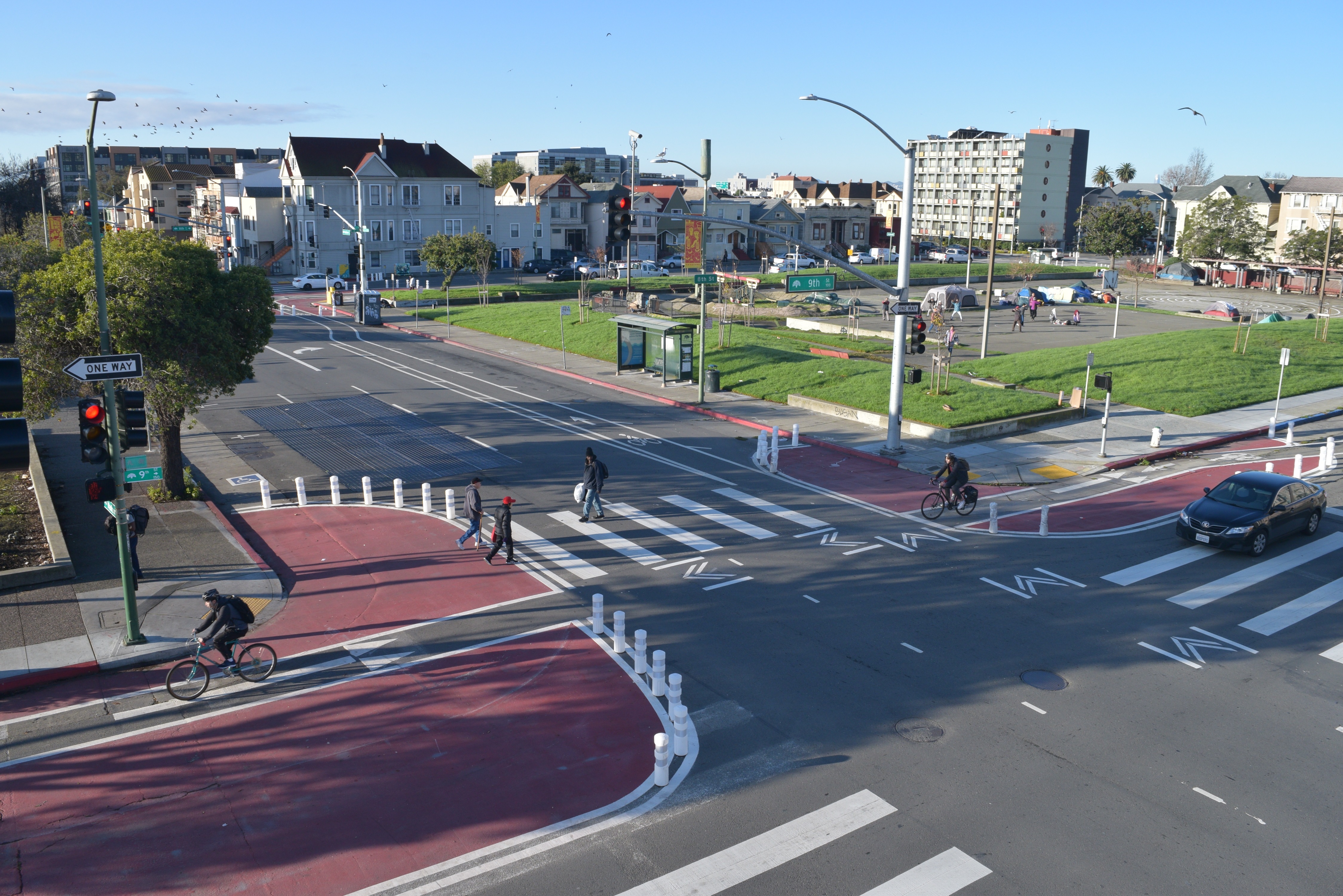See the proposed map of speed camera locations.
Every week, two Oaklanders are killed or seriously injured by traffic violence. These crashes disproportionally impact BIPOC communities, seniors, children, and people with disabilities. The Safe Oakland Streets (SOS) Initiative aims to prevent severe and fatal traffic crashes, eliminate injury inequities, and carefully assess and mitigate any equity impacts resulting from safety measures.
Automated speed enforcement has proven highly effective at preventing traffic deaths and injuries in cities across the United States and around the world. A new state law passed in October 2023 allows Oakland and 5 other cities to administer these speed safety systems as a pilot program. Oakland is permitted a total of 18 safety systems, which will be administered by the Department of Transportation (OakDOT).
The goal is to make our streets safer.
- Other cities with similar programs have significantly reduced fatal traffic crashes.
- Drivers are warned of speed safety systems with signage - camera locations will be obvious to encourage people to slow down.
- New systems will issue warnings for the first 60 days, rather than fines.
Equity and privacy provisions include:
- Small fines that start at 11 mph over the speed limit ($50) and offer a 50-80% fine reduction if unable to pay (vs. hundreds for traditional speeding tickets)
- Citations are non-moving violations, meaning no points on a driver's license or impacts to insurance.
- Removing interactions between police and the community at traffic stops that have the potential to escalate.
- Opportunities for community service in lieu of fines.
- Community involvement in drafting a "Use Policy & Equity Analysis" that includes criteria to select locations.
- Only authorizes the use of photographs (no video) that capture only the rear of the license plate, not the windshield or face of driver. Prohibits the use of facial recognition software.
- Footage may only be retained for 5 days if no violation is issued, 60 days if a violation is issued.
- Footage must be collected by the Department of Transportation and may not be shared or used for any other purpose.
How will revenue be spent?
- Any revenue generated beyond costs of program implementation must be spent on traffic calming measures.
Where are speed cameras being proposed?
Following AB 645 requirements, OakDOT identified 18 locations utilizing the City’s recently updated 2024 High-Injury Network (HIN)—the 8% of Oakland’s streets that account for 60% of severe and fatal collisions in Oakland. OakDOT collected data on vehicle speeds at over 40 locations before narrowing down to 18 candidate locations—prioritizing locations with the most documented speeding, as well as proximity to sensitive land uses such as schools, senior centers, and commercial districts.
Speed cameras are proposed for the following locations:
- Martin Luther King Junior Way (between 42nd and 43rd streets)
- Claremont Avenue (Between Hillegass Avenue and College Avenue)
- Foothill Boulevard (Between Irving Street and 24th Avenue)
- Foothill Boulevard (Between 19th and 20th avenues)
- 7th Street (Between Adeline and Linden streets)
- West Grand (Between Chestnut and Linden streets)
- Broadway (Between 26th and 27th streets)
- San Pablo Avenue (Between Athens and Sycamore streets)
- 7th Street (Between Broadway and Franklin Street)
- Macarthur Boulevard (Between Green Acre Road and Enos Avenue)
- Fruitvale Avenue (Between Galindo Street and Logan Street)
- International Boulevard (Between 40th and 41st avenues)
- Hegenberger Road (Between Spencer and Hawley)
- 73rd Avenue (Between Fresno and Krause)
- Bancroft Avenue (Between 86th Avenue and Auseon Avenue)
- 98th Avenue (Between Blake Drive and Gould Street)
- 98th Avenue (Between Cherry and Birch)
- Bancroft Avenue (Between 65th and 66th avenues)
To stay informed, please click the link at the top of the page.
Read the full AB 645 bill language here: https://leginfo.legislature.ca...
Have questions or comments? Contact speedcameras@oaklandca.gov.


